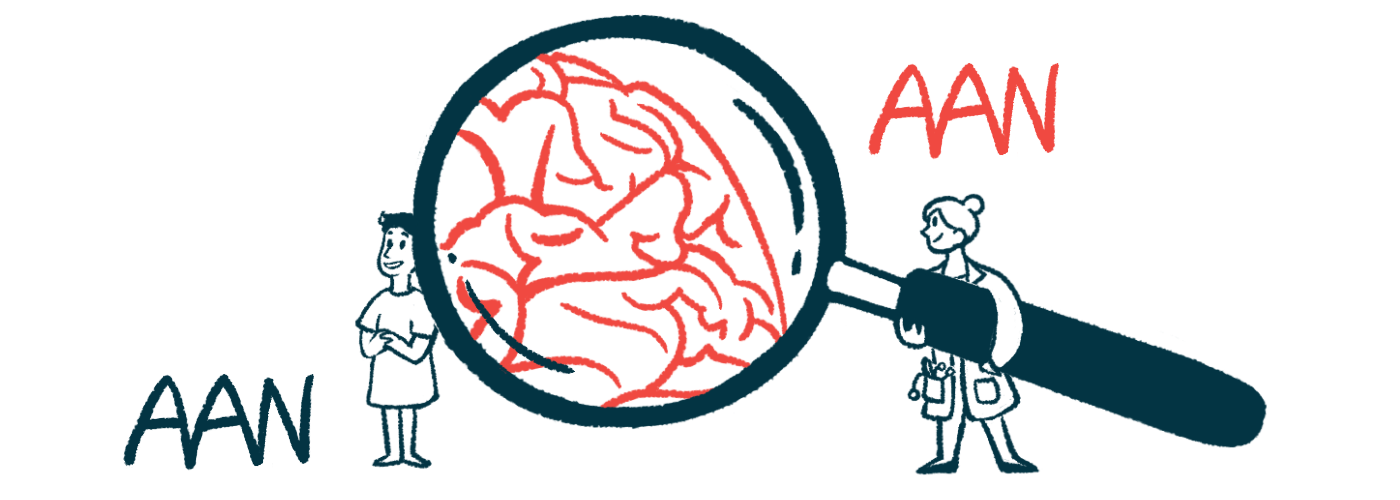AAN 2023: High-efficacy therapies slow disease progress faster in study
Traditional, high-efficacy treatments compared in slowing NMOSD advancement
Written by |

High-efficacy treatments for neuromyelitis optica spectrum disorder (NMOSD) are associated with significant reductions in hospitalizations, relapses, and MRI lesions relative to traditional therapies, according to a recent study.
The findings, which were published in the Journal of Neurology, were discussed in an oral presentation at the American Academy of Neurology (AAN) 2023 Annual Meeting, held April 22-27 in Boston and virtually.
“Our data shows that high-efficacy therapies appear to be better at reducing disease advancement compared to traditional agents,” said Tatum Moog of the University of Texas Southwestern Medical Center, in the talk titled “High-Efficacy Therapies Reduce Clinical and Radiological Events More Effectively than Traditional Treatments in Neuromyelitis Optica Spectrum Disorder.”
“However, prospective studies with longitudinal data are needed to verify these results,” Moog added.
Traditional medications vs. advanced, high-efficacy therapies
In NMOSD, the immune system wrongly produces self-reactive antibodies that cause inflammation of the spinal cord and optic nerve, which relays signals between the eye and the brain. This damaging inflammation, which can be detected on MRI scans, can lead to movement and vision problems.
As the understanding of NMOSD’s underlying mechanisms has advanced, high-efficacy therapies that specifically target such mechanisms have emerged. These treatments include Soliris (eculizumab), Uplizna (inebilizumab), and Enspryng (satralizumab), all of which are antibody-based therapies that target NMOSD-associated proteins.
Still, many patients are treated with traditional medications not specifically approved for the condition, but generally have broad immunosuppressive actions that can benefit people with autoimmune diseases like NMOSD.
To date, no clinical trials have directly compared the long-term risks and benefits of high-efficacy versus traditional therapies for NMOSD patients.
As such, Moog and colleagues retrospectively analyzed differences in clinical and MRI outcomes among 189 NMOSD patients treated for at least six months at the University of Texas Southwestern Medical Center and Parkland Memorial Hospital between 2008-2022.
High-efficacy therapies included Soliris, Uplizna, and Enspryng, as well as ocrelizumab, rituximab, and tocilizumab, which are used off-label for NMOSD but have similar mechanisms to the approved therapies.
Traditional therapies included azathioprine, cyclophosphamide, methotrexate, mycophenolic acid, mycophenolate mofetil, and intravenous immunoglobulin — a therapeutic approach that delivers healthy antibodies to neutralize self-reactive antibodies.
Most patients (85.2%) were positive for antibodies against AQP4, the most common type of NMOSD-causing antibodies.
A total of 92 people were exposed to high-efficacy therapies alone, 33 received only traditional treatments, and the remaining 64 people had been exposed to both types of therapies.
High-efficacy therapies had been used for a median of 2.9 years, whereas traditional therapies were used for about 2.3 years. The most common high-efficacy therapy was rituximab, used by 116 people, whereas the most common traditional therapy was mycophenolate mofetil, used by 59 people.
Across all three patient groups, most participants were women and nonwhite, and had been living with NMOSD for an average of 6.6 to 10.8 years.
Study results
Results, adjusted for potential influencing factors such as age at diagnosis, disease duration, ethnicity, and sex, showed a statistically significant reduction in the number of relapses, MRI-based progression events, and hospitalizations during high-efficacy treatment compared with traditional therapies.
Specifically, high-efficacy treatment was associated with a 99.8% lower relapse rate, 99.3% fewer hospitalizations, and a 62.4% lower occurrence of MRI-based disease progression events, defined as new or active lesions in the brain or spinal cord.
Similar findings were observed in the subset of 161 patients positive for anti-AQP4 antibodies. Among those patients, high-efficacy therapies were associated with a 99.5% drop in relapse rate, a 98.4% reduction in hospitalizations, and a 97% reduction in MRI lesions appearing in multiple locations.
In turn, traditional treatments among AQP4-positive patients were associated with an increase of nearly 700 times in the risk of new or active spinal cord lesions compared with high-efficacy therapies. No significant group differences were detected for the risk of brain lesion progression.
The findings overall indicate high efficacy therapies may be superior to traditional therapies at slowing disease progression.
However, “perhaps this isn’t really a study of the evaluation of high-efficacy versus traditional therapies, but rather a study that represents the appropriate treatment for NMOSD based on the biology of the disease,” Moog said. “Because the treatments in the high-efficacy group were in keeping with the biology of the disease, we saw the results we did.”
Among the study’s limitations, Moog noted the relatively low number of included patients for each treatment, and the lack of information on accessibility to therapeutic options, exposure to previous treatments, and socioeconomic conditions that may influence the results.





